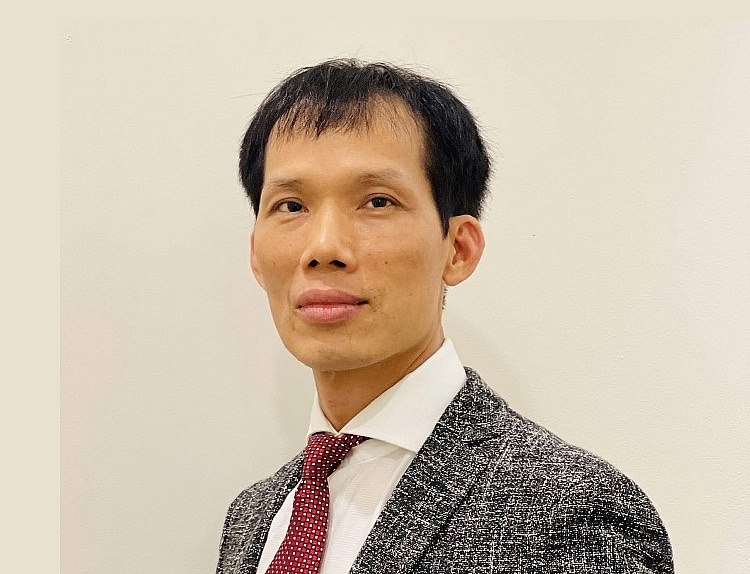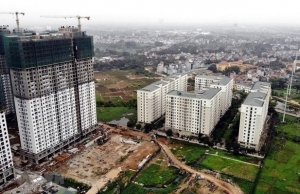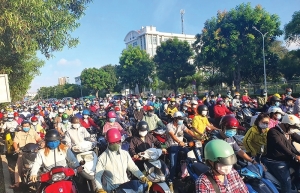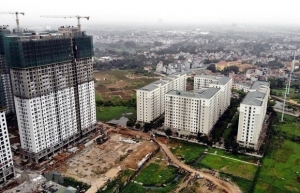Affordable housing is understood as commercial housing priced within the budget of majority of people.
It also creates jobs and stabilises spending on essential needs. In the context of the thirsty housing market, many countries have applied policies to develop affordable housing, including financial solutions and non-financial solutions.
 |
| Doan Van Binh, vice chairman of the Vietnam Real Estate Association |
The United States, according to the National Low-Income Housing Coalition, the US currently lacks 5.5-7.3 million affordable homes.
To solve the supply-demand mismatch, President Biden's administration has adjusted rules so all states and cities can use funds from the American Rescue Plan to create affordable rental housing, targeting people with incomes 65 per cent or less than the average income of their area.
The US is expanding the scope of low-income housing tax credit, focusing initiatives on local planning and rapidly increasing the density of construction of low-income housing, allowing the conversion of old and underutilised commercial space to develop quality affordable housing that integrates with the community.
Canada has a housing affordability index that measures housing-related costs such as mortgage payments and management fees that a household must pay monthly on gross income. The higher the index, the poorer the level of affordability.
A housing accelerator fund was established to encourage localities to innovate policies to accelerate the construction of such housing in return for more financial support. The fund, worth $2.9 billion in USD, is disbursed through the Canada Mortgage and Housing Corporation as part of the National Housing Strategy to build 100,000 new affordable homes across the country within three years.
Elsewhere, the Chinese government has decided to expand investment and develop a healthy real estate market with 17 financial and non-financial solutions. One of the solutions is to guide banks to direct the financial flow for affordable housing. The People's Bank of China claims to be consistent with the principle that housing is for residential purposes and not a means of speculation. China will add 6.5 million new low-income rental housing units in 40 major cities by 2025.
Meanwhile, Singapore is the most successful country in Southeast Asia in ensuring housing, with many effective policies to promote a real estate market with a high level of emphasis on people in difficult circumstances.
Singapore has long-established preferential policies on taxes and fees for investors and buyers and renters of affordable housing, encouraging foreign investment. It has established a housing development board, central provident fund, and real estate investment trust to develop housing for all society. This is a fundamental pillar of Singapore's housing policy. This mechanism attracts social investment capital through strengthening public-private cooperation in affordable housing development.
It is necessary for Vietnam to introduce a thoughtful concept and promulgate criteria to determine what affordable housing is. Accordingly, it is possible to set quantitative criteria based on the ratio between housing costs and people's incomes, similar to the method used by UN Habitat and the US Department of Housing and Urban Development.
Regulations on such housing in the legal system must be synchronised, focusing on building policies to encourage the development of affordable housing with full amenities, including awarding bonuses for investors to create affordable housing.
In addition, Vietnam should refer to the experience of countries such as Australia, Canada, the US, and New Zealand to control ceiling prices and rental costs of affordable housing, while developing standards, regulations, and new technologies for the segment.
Other solutions include developing land for affordable housing, allowing increased construction density in high-rise housing projects, and developing preferential policies on taxes and fees for investors, buyers, and renters.
It also needs to establish a housing development board, housing savings fund, and real estate trust fund to be the base for financial support for affordable housing. Other types of investment such as foreign investment and public-private partnerships are needed to encourage development in this area.
 | Vietnam still lacks low-priced apartments Vietnam has less than half of the low-income houses it targeted for in 2020, according to data from the Ministry of Construction (MoC). |
 | Purpose-driven regulations desired for affordable housing The shortage of low-income housing for workers in industrial zones and people in urban areas has become a hot topic in Vietnam, with the government and other authorities looking to get to the bottom of the situation. |
 | Social housing needed to boost capital in real estate Amid a gloomy real estate market, experts have pointed out that the affordable housing segment is the key to mobilising capital. |
What the stars mean:
★ Poor ★ ★ Promising ★★★ Good ★★★★ Very good ★★★★★ Exceptional
Related Contents
Latest News
More News
- Sun Group breaks ground on $2 billion Van Don casino complex (December 19, 2025 | 18:14)
- Rare, beautiful, sustainable: the mark of iconic real estate (December 19, 2025 | 08:00)
- Owner-occupied housing stabilises, paving the way for new growth cycle (December 18, 2025 | 17:04)
- Unlocking urban potential of smart cities (December 18, 2025 | 16:50)
- Green finance offers 'passport' for Vietnamese construction, building materials firms (December 15, 2025 | 08:00)
- Gamuda Land commit long-term investment (December 12, 2025 | 11:49)
- HITC ties up with Evolution to develop AI and hyperscale data centres in Vietnam (December 11, 2025 | 12:09)
- Real estate deals boom via high-profile names (December 08, 2025 | 11:32)
- Industrial segment shaped by M&As (December 08, 2025 | 08:00)
- The Privé sets the benchmark for luxury real estate (December 05, 2025 | 08:28)

 Tag:
Tag:




















 Mobile Version
Mobile Version